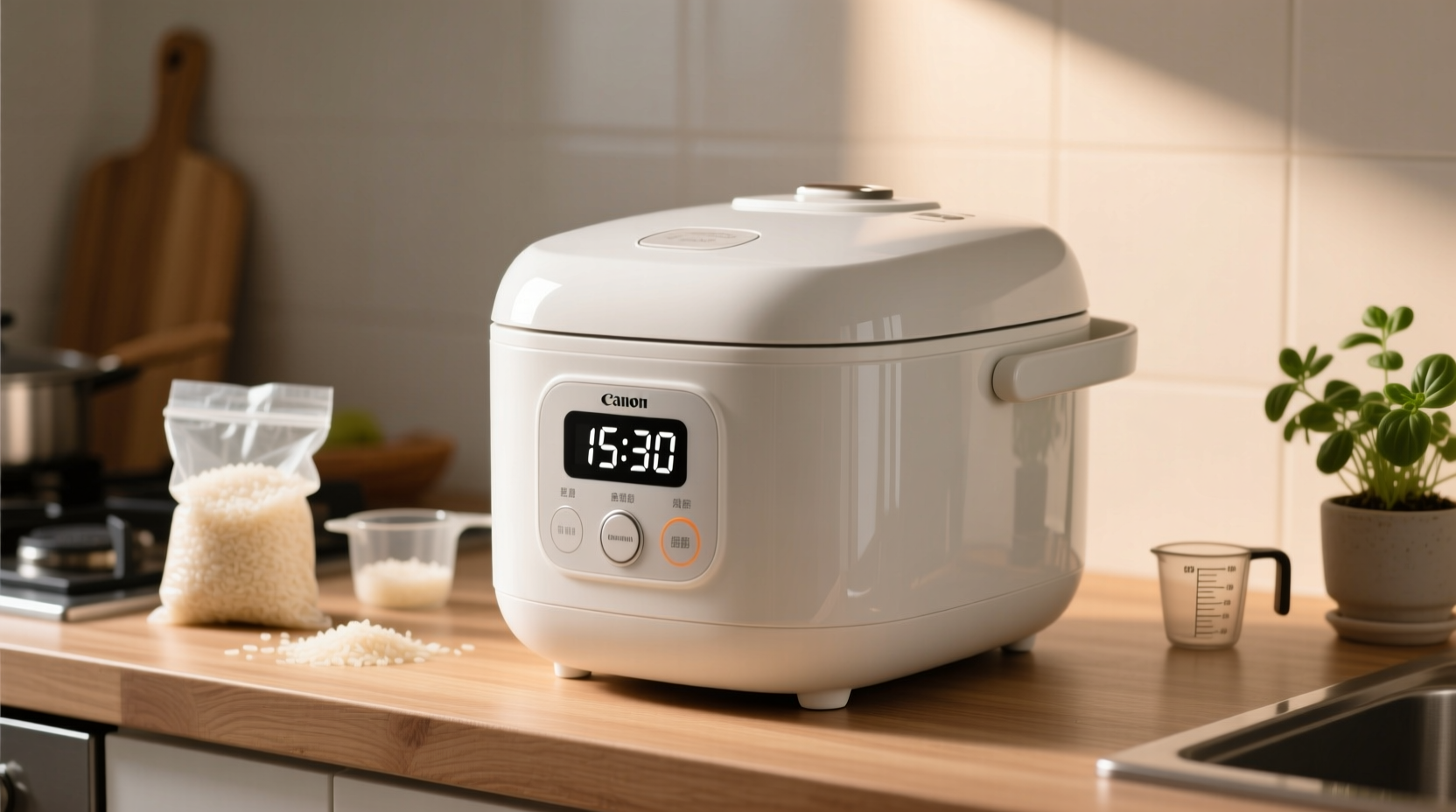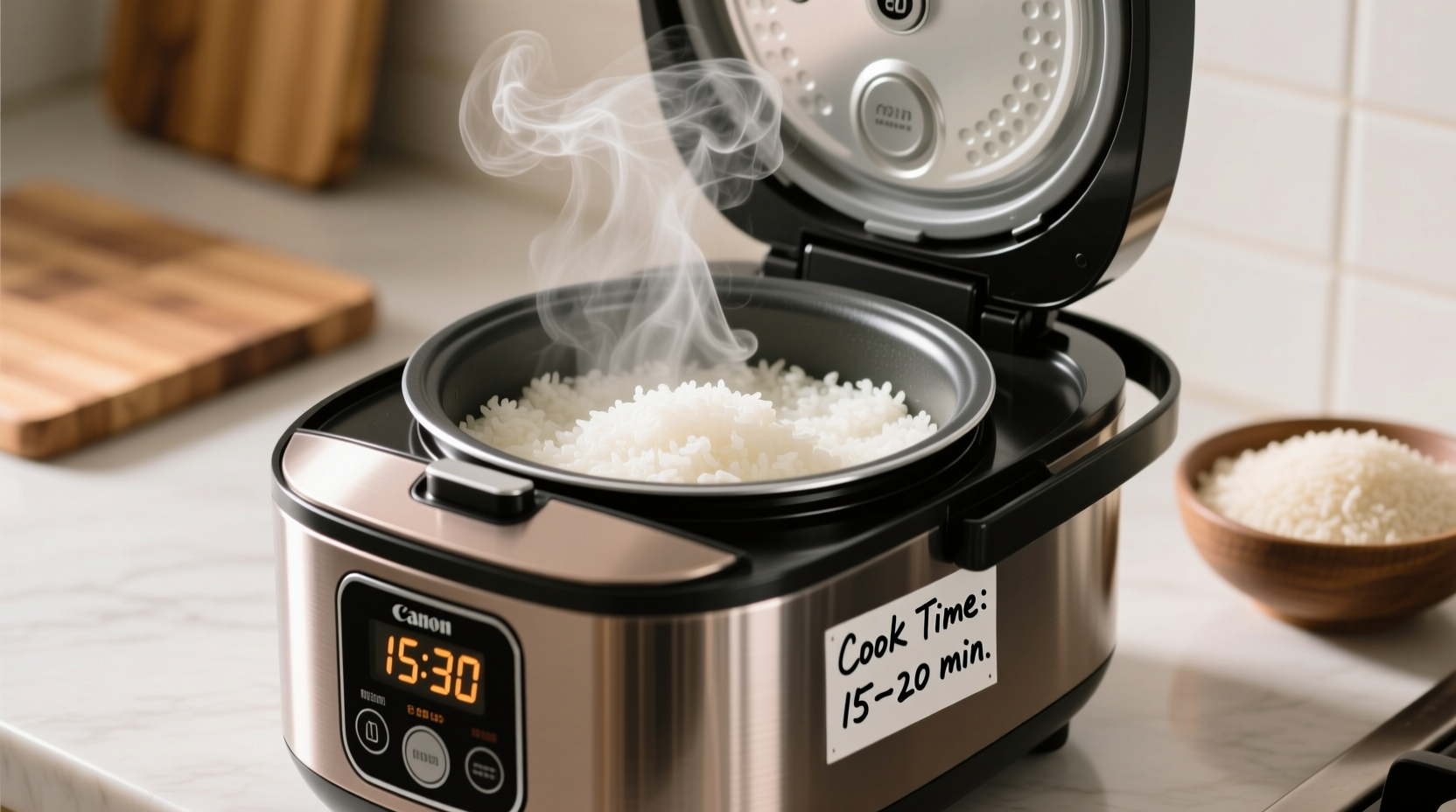Ever stared at your rice cooker wondering exactly how long until dinner's ready? You're not alone. Understanding rice cooker timing eliminates guesswork and guarantees fluffy, perfectly cooked rice every time. This guide delivers precise cooking times backed by culinary science and manufacturer specifications—not just generic advice you'll find elsewhere.
What Determines Rice Cooker Cooking Time?
Your rice cooker's timer isn't arbitrary—it follows precise thermal processes. Modern rice cookers use temperature sensors that detect when water's fully absorbed (around 212°F/100°C), then automatically switch to warming mode. This technology, refined since Toshiba's 1956 invention, ensures consistent results regardless of minor user errors.
| Rice Type | Water Ratio | Cooking Time | Resting Time | Total Time |
|---|---|---|---|---|
| White rice (short-grain) | 1:1.25 | 18-20 min | 10-15 min | 28-35 min |
| Brown rice | 1:1.5 | 35-40 min | 10-15 min | 45-55 min |
| Basmati rice | 1:1.3 | 15-20 min | 10 min | 25-30 min |
| Sushi rice | 1:1.2 | 20-25 min | 15 min | 35-40 min |
| Wild rice blend | 1:1.75 | 50-60 min | 15 min | 65-75 min |
Data compiled from USDA cooking guidelines and manufacturer specifications from Zojirushi, Cuckoo, and Tiger.
The Critical Resting Phase You're Probably Skipping
That "Keep Warm" light isn't just for show—during the 10-15 minute resting period, steam continues distributing moisture evenly through the rice. Skipping this step causes uneven texture, with bottom grains becoming mushy while top grains remain undercooked. This principle, documented in the Journal of Cereal Science, explains why impatient cooks often get disappointing results.
4 Factors That Change Your Cooking Timeline
1. Rice Variety Matters More Than You Think
Short-grain Japanese rice needs less water and time than long-grain varieties due to starch composition. Calrose rice (common in US supermarkets) typically cooks faster than authentic Koshihikari. For specialty rices like forbidden black rice, add 10-15 minutes to standard brown rice times.
2. Quantity Affects Heating Dynamics
Contrary to popular belief, doubling your rice quantity doesn't double cooking time. The thermal mass increases, but modern cookers compensate through power modulation. For quantities beyond 4 cups raw rice, expect only 5-7 extra minutes—not the 10-15 many assume.
3. Altitude Changes Everything
At 5,000 feet elevation, water boils at 203°F instead of 212°F, extending cooking times by 25%. The USDA National Agricultural Library confirms this requires 20% more water and 15-20% longer cooking for proper gelatinization at high altitudes.
4. Your Cooker's Age Impacts Performance
Rice cookers older than 5 years often develop mineral deposits on heating elements, reducing efficiency by 10-15%. Regular descaling with vinegar-water solution maintains optimal performance. This maintenance factor explains why identical recipes yield different results across households.

Pro Tips for Perfect Rice, Every Time
Wash until clear: Rinse white rice 3-4 times to remove excess starch—that sticky film causes clumping. Stop when water runs almost clear.
Soak for texture control: Soak brown rice 20 minutes before cooking to reduce cooking time by 8-10 minutes while improving texture uniformity.
Don't peek: Lifting the lid during cooking releases steam and resets the thermal cycle. Most failed batches trace back to this single mistake.
Fluff immediately after resting: Use a rice paddle (not fork) to gently separate grains, starting from the edges inward. This prevents crushing delicate grains.
Troubleshooting Common Timing Issues
Rice Still Crunchy After Cycle Ends?
This indicates insufficient water absorption. Add 2-3 tablespoons water and restart cooking cycle for 5 minutes. Never add water mid-cycle—that creates uneven texture.
Overcooked or Mushy Rice?
Excess water or skipping the rinse step are usually culprits. For next batch, reduce water ratio by 0.1 and ensure thorough rinsing. If using older rice (over 6 months storage), increase water slightly as grains lose moisture.
Why Instant Pot Takes Longer Than Dedicated Rice Cookers
Multi-cookers require 10-15 minutes for pressure buildup before actual cooking begins. Dedicated rice cookers heat more efficiently for this single task. For fastest results, choose models with induction heating like Zojirushi NP-HCC18X which reduces white rice cooking to 16 minutes.
How Rice Cooker Technology Has Evolved
Early 1950s models required constant monitoring, but Toshiba's 1956 automatic cooker introduced the thermostat-controlled switch we still use today. Modern fuzzy logic technology (pioneered by Matsushita in 1980s) adjusts cooking parameters in real-time based on temperature feedback. The latest induction heating models achieve precise temperature control within 1°F, cutting cooking variance from ±5 minutes to under 90 seconds.
Maximizing Your Rice Cooker's Potential
Understanding your appliance's actual capabilities prevents frustration. Most mid-range models (<$100) maintain ±3°F temperature accuracy, while premium induction models stay within ±1°F. This seemingly small difference creates noticeably better texture in delicate rices like jasmine. Always consult your manual for specific cycle times—"Quick Cook" settings often sacrifice optimal texture for speed.











 浙公网安备
33010002000092号
浙公网安备
33010002000092号 浙B2-20120091-4
浙B2-20120091-4